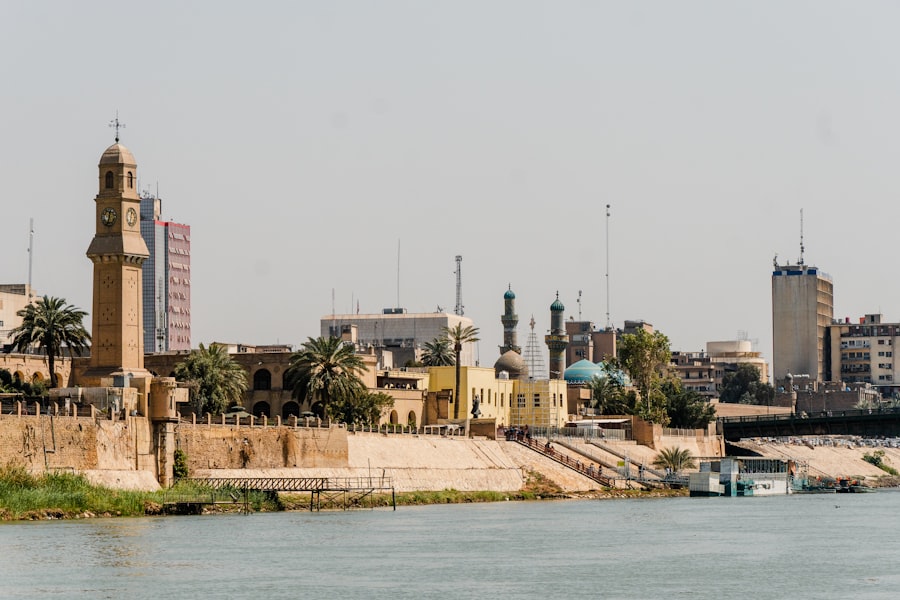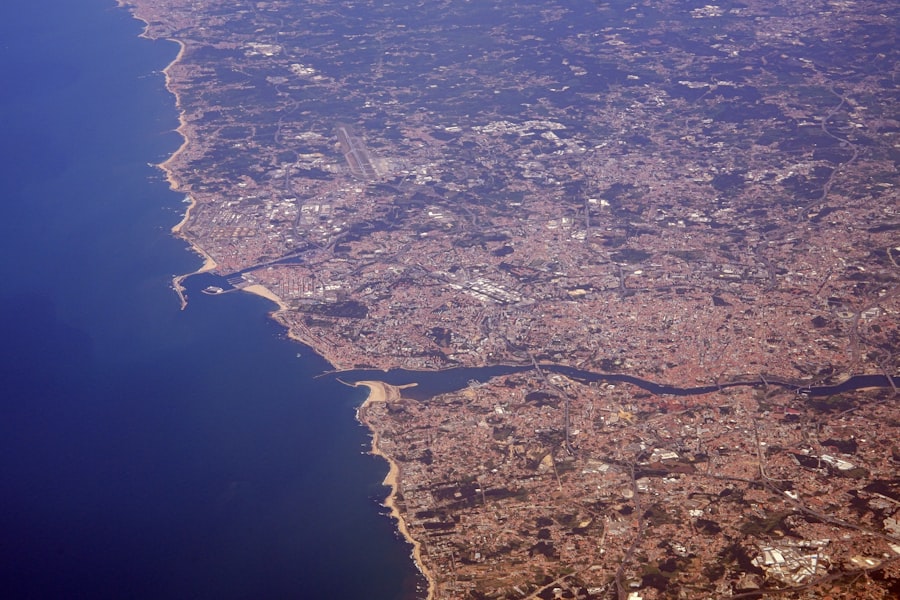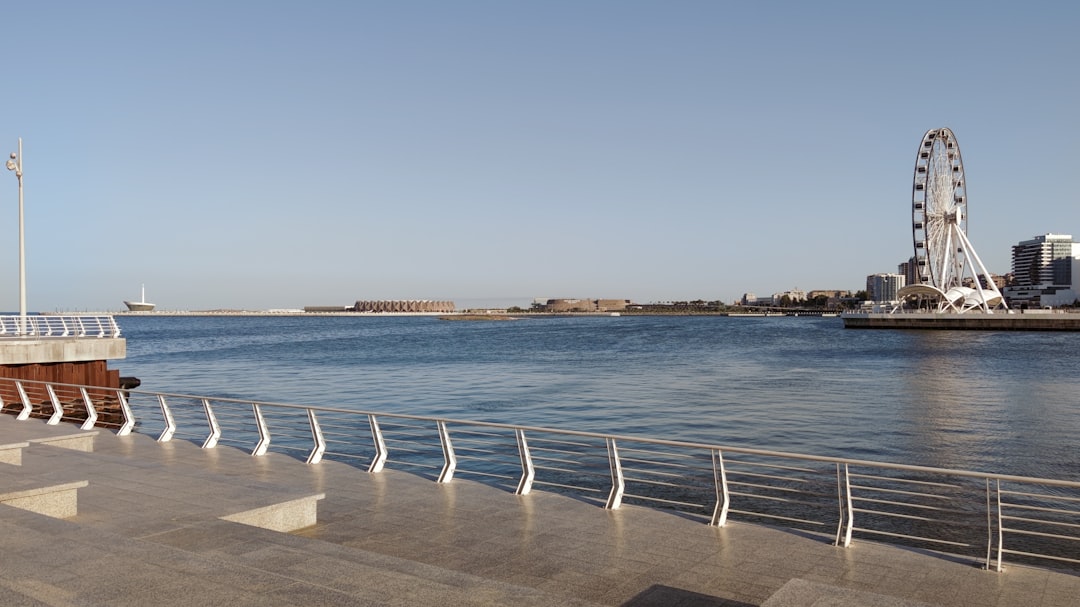The Suez Canal stands as a monumental achievement in engineering and a pivotal artery for global trade. Completed in 1869, this artificial waterway connects the Mediterranean Sea to the Red Sea, allowing ships to bypass the lengthy and perilous journey around the southern tip of Africa. The canal significantly reduces travel time for vessels, enabling them to save both time and fuel costs.
As a result, it has become a critical passage for approximately 12% of global trade, facilitating the movement of goods between Europe, Asia, and beyond. The strategic location of the Suez Canal has made it an essential route for oil and gas shipments, as well as containerized cargo, which is vital for the global economy. Moreover, the Suez Canal’s importance extends beyond mere logistics; it serves as a symbol of international cooperation and economic interdependence.
Countries around the world rely on this narrow waterway to ensure the timely delivery of goods, from consumer products to raw materials. The canal’s role in global trade underscores its significance not only for Egypt but also for nations that depend on its efficient operation. As trade patterns evolve and global demand shifts, the Suez Canal remains a linchpin in the intricate web of international commerce.
Key Takeaways
- The Suez Canal plays a crucial role in global trade, providing a vital shortcut for ships traveling between Europe and Asia.
- The need for expansion arises from the increasing traffic and larger vessels using the canal, requiring it to accommodate modern shipping demands.
- The construction process involved digging a new parallel canal to the existing one, allowing for two-way traffic and reducing transit times.
- The expansion has had a significant impact on shipping routes, reducing congestion and waiting times for vessels passing through the canal.
- Egypt has reaped economic benefits from the expansion, including increased revenue from tolls and job creation in the construction and maritime sectors.
The Need for Expansion
As global trade continues to grow at an unprecedented rate, the need for expansion of the Suez Canal has become increasingly apparent. The original canal, while revolutionary in its time, was not designed to accommodate the larger vessels that dominate modern shipping. The advent of mega-container ships, capable of carrying thousands of containers at once, has placed immense pressure on the canal’s capacity.
In response to this challenge, Egyptian authorities recognized that expanding the canal was not merely an option but a necessity to maintain its status as a vital trade route. The expansion project aimed to enhance the canal’s capacity and efficiency, allowing it to handle more traffic and reduce waiting times for vessels. By widening and deepening certain sections of the canal, authorities sought to create a more fluid passage for ships, thereby increasing the overall throughput.
This expansion was not only about accommodating larger vessels but also about ensuring that the Suez Canal could continue to meet the demands of a rapidly changing global economy.
The Construction Process

The construction process of the Suez Canal expansion was a monumental undertaking that required meticulous planning and execution. Launched in 2014, the project involved significant engineering challenges, including dredging and excavation to widen and deepen specific sections of the canal. The Egyptian government mobilized a vast workforce and utilized advanced machinery to expedite the construction process.
The project was completed in just one year, showcasing Egypt’s commitment to enhancing its infrastructure and boosting its role in global trade. Throughout the construction phase, various stakeholders were involved, including local contractors and international engineering firms. The collaboration between these entities ensured that best practices were employed, resulting in a high-quality expansion that met international standards.
The successful completion of the project not only demonstrated Egypt’s engineering capabilities but also highlighted its determination to position itself as a key player in global maritime trade.
Impact on Shipping Routes
| Shipping Route | Impact |
|---|---|
| Suez Canal | Blockage by a grounded container ship |
| Panama Canal | Increased traffic due to diversions |
| Strait of Hormuz | Geopolitical tensions affecting passage |
The expansion of the Suez Canal has had a profound impact on shipping routes worldwide. With increased capacity and improved navigation conditions, vessels can now transit through the canal more efficiently than ever before. This enhancement has led to shorter transit times, allowing shipping companies to optimize their schedules and reduce operational costs.
As a result, many shipping lines have adjusted their routes to take full advantage of the expanded canal, further solidifying its status as a preferred passage for international trade. Additionally, the expansion has opened up new opportunities for trade between regions that were previously less accessible. By facilitating faster shipping times between Europe and Asia, the Suez Canal has become an even more attractive option for businesses looking to streamline their supply chains.
Economic Benefits for Egypt
The economic benefits of the Suez Canal expansion extend far beyond improved shipping efficiency; they encompass a wide range of positive impacts on Egypt’s economy. The canal is a significant source of revenue for the Egyptian government, generating billions of dollars annually from tolls paid by passing vessels. With the expansion increasing traffic through the canal, Egypt stands to gain even more from this vital source of income.
The additional revenue can be reinvested into infrastructure projects, education, and healthcare, ultimately contributing to national development. Furthermore, the expansion has created job opportunities for thousands of Egyptians during both the construction phase and in ongoing operations. As shipping traffic increases, there is a growing demand for skilled labor in various sectors related to maritime logistics, including port management and customs services.
This influx of jobs can help alleviate unemployment rates and stimulate local economies along the canal’s route. Overall, the economic benefits derived from the Suez Canal expansion are expected to have a lasting impact on Egypt’s growth trajectory.
Environmental Concerns

While the expansion of the Suez Canal brings numerous economic advantages, it also raises important environmental concerns that cannot be overlooked. The construction process itself involved significant dredging and excavation activities that could disrupt local ecosystems and marine life. Environmentalists have expressed worries about potential damage to habitats along the canal and in adjacent waters, emphasizing the need for careful monitoring and mitigation strategies.
Moreover, increased shipping traffic through the canal may lead to heightened pollution levels in surrounding areas. The rise in vessel numbers can contribute to air and water pollution from fuel emissions and ballast water discharge. To address these concerns, it is crucial for authorities to implement stringent environmental regulations and promote sustainable practices within the shipping industry.
Balancing economic growth with environmental stewardship will be essential for ensuring that the benefits of the canal expansion do not come at an unacceptable cost to nature.
The Role of Technology in the Expansion
Technology played a pivotal role in the successful expansion of the Suez Canal, enabling engineers and planners to execute complex tasks with precision and efficiency. Advanced dredging equipment was employed to remove sediment and deepen sections of the canal, while sophisticated software systems facilitated real-time monitoring of construction progress. These technological innovations not only expedited the construction process but also ensured that safety standards were upheld throughout.
In addition to construction technologies, advancements in navigation systems have enhanced maritime operations within the expanded canal. Modern vessels are equipped with cutting-edge navigation tools that allow for more accurate positioning and route planning. This technological integration has improved safety measures and reduced the risk of accidents within the canal’s busy waters.
As technology continues to evolve, it is likely that further innovations will emerge to optimize operations within this critical trade route.
Potential Challenges and Risks
Despite its many advantages, the expansion of the Suez Canal is not without potential challenges and risks that could impact its long-term success. One significant concern is geopolitical instability in the region, which could disrupt shipping operations or lead to increased security threats for vessels transiting through the canal. Political tensions or conflicts involving neighboring countries may pose risks that could deter shipping lines from utilizing this route.
Additionally, fluctuations in global trade patterns can affect traffic through the canal. Economic downturns or shifts in consumer demand may lead to reduced shipping volumes, impacting revenue generated from tolls. To mitigate these risks, it is essential for Egyptian authorities to remain adaptable and responsive to changing market conditions while fostering strong relationships with international trading partners.
The Future of Global Trade
The future of global trade is intricately linked to developments such as the expansion of key maritime routes like the Suez Canal. As economies continue to recover from disruptions caused by events like pandemics or geopolitical tensions, there will be an increasing demand for efficient shipping solutions that can facilitate international commerce.
Moreover, as sustainability becomes a focal point in global trade discussions, there will be an emphasis on reducing carbon footprints associated with shipping activities. The Suez Canal’s expansion may need to adapt to these evolving priorities by promoting greener practices within maritime operations. This could involve incentivizing vessels that utilize cleaner technologies or implementing stricter environmental regulations for ships transiting through its waters.
International Collaboration and Support
International collaboration will be vital in maximizing the benefits derived from the Suez Canal expansion while addressing potential challenges. Countries that rely on this critical trade route must work together to ensure its continued efficiency and security. Collaborative efforts could involve sharing best practices in maritime safety, environmental protection measures, and technological advancements that enhance navigation.
Furthermore, support from international organizations can play a significant role in promoting sustainable practices within shipping industries worldwide. By fostering partnerships between governments, private sector stakeholders, and environmental organizations, it becomes possible to create frameworks that balance economic growth with ecological preservation along vital trade routes like the Suez Canal.
The Impact of the New Suez Canal Expansion
The expansion of the Suez Canal represents a transformative moment in global trade dynamics, offering numerous benefits while also presenting challenges that require careful consideration. By enhancing capacity and efficiency within this critical waterway, Egypt has positioned itself as an essential player in international commerce while generating significant economic opportunities domestically. However, as with any major infrastructure project, it is crucial to remain vigilant about potential environmental impacts and geopolitical risks associated with increased shipping traffic.
Through ongoing collaboration among nations and stakeholders within maritime industries, it is possible to navigate these challenges effectively while maximizing the advantages offered by this monumental expansion. Ultimately, as global trade continues to evolve in response to changing demands and priorities, the Suez Canal will remain a vital conduit for commerce—a testament to human ingenuity and cooperation that shapes economies around the world.
The Suez Canal Expansion has been a significant development in global trade, aiming to increase the capacity and efficiency of this crucial maritime route. This expansion is expected to reduce transit times and accommodate larger vessels, thereby enhancing the canal’s role in international shipping. For more insights into the geographical and economic implications of such infrastructural projects, you can explore a related article on MyGeoQuest, which delves into various global geographical phenomena and their impacts.
WATCH NOW! Unlocking Disaster: 7 Choke Points That Could Fracture Our Connected World Overnight
FAQs
What is the Suez Canal Expansion?
The Suez Canal Expansion refers to the project undertaken to widen and deepen the Suez Canal, a crucial waterway in Egypt, to allow for larger vessels to pass through and increase the canal’s capacity.
When did the Suez Canal Expansion take place?
The Suez Canal Expansion project was completed in August 2015, with the official opening taking place on August 6th of that year.
Why was the Suez Canal Expansion necessary?
The expansion was necessary to accommodate the increasing size of vessels and to reduce transit times and congestion in the canal. It was also aimed at boosting the economy by increasing the canal’s capacity and efficiency.
What were the key features of the Suez Canal Expansion?
The key features of the Suez Canal Expansion included the widening and deepening of the existing canal, the creation of a parallel canal to allow for two-way traffic, and the development of new industrial and logistical zones along the canal.
How did the Suez Canal Expansion impact global trade?
The expansion has had a significant impact on global trade by reducing transit times for vessels and increasing the canal’s capacity, allowing for more efficient and cost-effective transportation of goods between Europe and Asia.
What were the economic benefits of the Suez Canal Expansion?
The Suez Canal Expansion has brought economic benefits to Egypt by increasing revenue from canal tolls, creating new job opportunities, and stimulating investment in the development of the surrounding areas.
